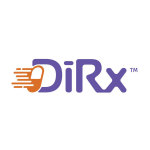WELIREG Approved for Adult Patients With VHL Disease Who Require Therapy for Associated Renal Cell Carcinoma, Central Nervous System Hemangioblastomas, or Pancreatic Neuroendocrine Tumors, Not Requiring Immediate Surgery
WELIREG Expands Merck’s Oncology Portfolio as the First and Only Systemic Therapy Approved for These Patients With VHL Disease
KENILWORTH, N.J. — (BUSINESS WIRE) — $MRK #MERCK–Merck (NYSE: MRK), known as MSD outside the United States and Canada, today announced that the U.S. Food and Drug Administration (FDA) has approved WELIREG, an oral hypoxia-inducible factor-2 alpha (HIF-2α) inhibitor, for the treatment of adult patients with von Hippel-Lindau (VHL) disease who require therapy for associated renal cell carcinoma (RCC), central nervous system (CNS) hemangioblastomas, or pancreatic neuroendocrine tumors (pNET), not requiring immediate surgery. The recommended dose of WELIREG (40 mg tablets) is 120 mg once daily until disease progression or unacceptance toxicity. The approval is based on results from the open-label Study 004 trial (N=61), where the major efficacy endpoint was overall response rate (ORR) in patients with VHL-associated RCC.

WELIREG is the first HIF-2α inhibitor therapy approved in the U.S. As an inhibitor of HIF-2α, WELIREG reduces transcription and expression of HIF-2α target genes associated with cellular proliferation, angiogenesis and tumor growth.
The WELIREG label contains a boxed warning that exposure to WELIREG during pregnancy can cause embryo-fetal harm. Verify pregnancy status prior to the initiation of WELIREG. Advise patients of these risks and the need for effective non-hormonal contraception. WELIREG can render some hormonal contraceptives ineffective. WELIREG can cause severe anemia that can require a blood transfusion. Monitor for anemia before initiation of WELIREG and periodically throughout treatment. WELIREG can cause severe hypoxia that may require discontinuation, supplemental oxygen, or hospitalization. Monitor oxygen saturation before initiation of and periodically throughout treatment with WELIREG. For more information, see “Selected Safety Information” below.
“VHL disease is a rare and serious condition. Until today, there were no systemic therapies approved to help treat patients diagnosed with certain types of VHL-associated tumors,” said Dr. Eric Jonasch, principal investigator of Study 004 and professor, Department of Genitourinary Medical Oncology, Division of Cancer Medicine, The University of Texas MD Anderson Cancer Center. “The approval of WELIREG, which is based on data showing an overall response rate across three different types of VHL-associated tumors, addresses this significant unmet need by introducing a new option for physicians and their patients impacted by this disease.”
“WELIREG is the first and only approved systemic therapy for patients with certain types of VHL-associated tumors, representing an important new treatment option for patients affected by this rare condition,” said Dr. Scot Ebbinghaus, vice president, clinical research, Merck Research Laboratories. “Today’s approval of WELIREG is a significant milestone and is a testament to Merck’s commitment to bring forward innovative new treatment options for more patients.”
“The approval of a non-surgical treatment option is meaningful for helping patients with certain types of VHL-associated tumors,” said Dr. Ramaprasad Srinivasan, head, Molecular Cancer Therapeutics Section, Urologic Oncology Branch, National Cancer Institute (NCI), and principal investigator on the Cooperative Research and Development Agreement (CRADA) under which the NCI served as a site in Study 004. “In Study 004, nearly half of all patients with VHL-associated renal cell carcinoma, as well as the majority of patients with VHL-associated central nervous system hemangioblastomas or pancreatic neuroendocrine tumors, who were treated with WELIREG experienced a reduction of their respective tumor size. The FDA’s approval of WELIREG marks an important step forward by introducing a systemic therapy that has the potential to improve the current treatment paradigm for patients with certain types of VHL-associated tumors.”
Merck is working to optimize production of WELIREG to allow for a sustainable supply to meet anticipated U.S. demand. Commercial supply is expected to be available by early September.
Data Supporting the Approval
The approval was based on data from Study 004 (ClinicalTrials.gov, NCT03401788), an open-label trial in 61 patients with VHL-associated RCC diagnosed based on a VHL germline alteration and with at least one measurable solid tumor (as defined by Response Evaluation Criteria in Solid Tumors [RECIST] v1.1) localized to the kidney. Enrolled patients had other VHL-associated tumors, including CNS hemangioblastomas and pNET. CNS hemangioblastomas and pNET in these patients were diagnosed based on the presence of at least one measurable solid tumor in the brain/spine or pancreas, respectively, as defined by RECIST v1.1 and identified by an independent review committee (IRC). The study excluded patients with metastatic disease. Patients received WELIREG at a dose of 120 mg once daily until progression of disease or unacceptable toxicity. In Study 004, the median duration of exposure to WELIREG was 68 weeks (range, 8.4 to 104.7).
The study population characteristics were: median age of 41 years (range, 19 to 66), 3.3% age 65 or older; 53% male; 90% white, 3.3% Black or African American, 1.6% Asian, and 1.6% Native Hawaiian or other Pacific Islander; 82% had an Eastern Cooperative Oncology Group (ECOG) performance status (PS) of 0, 16% had an ECOG PS of 1, and 1.6% had an ECOG PS of 2; and 84% had VHL type I disease. The median diameter of RCC target lesions per central IRC was 2.2 centimeters (range, 1 to 6.1). Median time from initial radiographic diagnosis of VHL-associated RCC tumors that led to enrollment on Study 004 to the time of treatment with WELIREG was 17.9 months (range, 2.8 to 96.7). Seventy-seven percent of patients had prior surgical procedures for RCC.
The major efficacy endpoint for the treatment of VHL-associated RCC was ORR measured by radiology assessment using RECIST v1.1 as assessed by IRC. Additional efficacy endpoints included duration of response (DoR) and time to response (TTR).
In patients with VHL-associated RCC (n=61), WELIREG showed an ORR of 49% (95% CI, 36-62); all responses were partial responses. Median DoR had not yet been reached (range, 2.8+ to 22.3+ months); among responders, 56% (n=17/30) were still responding after at least 12 months. Median TTR was eight months (range, 2.7 to 19).
In patients with VHL-associated CNS hemangioblastomas (n=24), WELIREG showed an ORR of 63% (95% CI, 41-81), with a complete response rate of 4% (n=1) and a partial response rate of 58% (n=14). Median DoR had not yet been reached (range, 3.7+ to 22.3+ months); among responders, 73% (n=11/15) were still responding after at least 12 months. Median TTR was three months (range, 3 to 11).
In patients with VHL-associated pNET (n=12), WELIREG showed an ORR of 83% (95% CI, 52-98), with a complete response rate of 17% (n=2) and a partial response rate of 67% (n=8). Median DoR had not yet been reached (range, 10.8+ to 19.4+ months); among responders, 50% (n=5/10) were still responding after at least 12 months. Median TTR was eight months (range, 3 to 11).
Serious adverse reactions occurred in 15% of patients who received WELIREG, including anemia, hypoxia, anaphylaxis reaction, retinal detachment and central retinal vein occlusion (1 patient each). Permanent discontinuation of WELIREG due to adverse reactions occurred in 3.3% of patients. Adverse reactions that resulted in permanent discontinuation of WELIREG were dizziness and opioid overdose (1.6% each).
Dosage interruptions of WELIREG due to an adverse reaction occurred in 39% of patients. Adverse reactions that required dosage interruption in >2% of patients were fatigue, decreased hemoglobin, anemia, nausea, abdominal pain, headache and influenza-like illness. Dose reductions of WELIREG due to an adverse reaction occurred in 13% of patients. The most frequently reported adverse reaction that required dose reduction was fatigue (7%).
The most common adverse reactions (≥25%), including laboratory abnormalities, that occurred in patients treated with WELIREG were decreased hemoglobin (93%), anemia (90%), fatigue (64%), increased creatinine (64%), headache (39%), dizziness (38%), increased glucose (34%) and nausea (31%).
About Von Hippel-Lindau Disease
The incidence of von Hippel-Lindau (VHL) syndrome is estimated to be one in 36,000 individuals. This is a rare genetic disease with an estimated incidence of 10,000 people in the U.S. Patients with VHL disease are at risk for benign blood vessel tumors as well as some cancerous ones, including renal cell carcinoma.
WELIREG™ (belzutifan) Indication in the U.S.
WELIREG (belzutifan) is indicated for the treatment of adult patients with von Hippel-Lindau (VHL) disease who require therapy for associated renal cell carcinoma (RCC), central nervous system (CNS) hemangioblastomas, or pancreatic neuroendocrine tumors (pNET), not requiring immediate surgery.
Selected Safety Information
Warning: Embryo-Fetal Toxicity
Exposure to WELIREG during pregnancy can cause embryo-fetal harm. Verify pregnancy status prior to the initiation of WELIREG. Advise patients of these risks and the need for effective non-hormonal contraception as WELIREG can render some hormonal contraceptives ineffective.
Anemia
WELIREG can cause severe anemia that can require blood transfusion. In Study 004, anemia occurred in 90% of patients and 7% had Grade 3 anemia. In Study 001, a clinical trial in patients with advanced solid tumors (n=58) treated at the recommended dose, anemia occurred in 76% of patients and 28% had Grade 3 anemia.
Monitor for anemia before initiation of and periodically throughout treatment. Closely monitor patients who are dual UGT2B17 and CYP2C19 poor metabolizers due to potential increases in exposure that may increase the incidence or severity of anemia.
Transfuse patients as clinically indicated. For patients with hemoglobin <9g/dL, withhold WELIREG until Hb≥9g/dL, then resume at reduced dose or permanently discontinue depending on the severity of anemia. For life threatening anemia or when urgent intervention is indicated, withhold WELIREG until hemoglobin ≥9g/dL, then resume at a reduced dose or permanently discontinue.
The use of erythropoiesis stimulating agents (ESAs) for treatment of anemia is not recommended in patients treated with WELIREG.
Hypoxia
WELIREG can cause severe hypoxia that may require discontinuation, supplemental oxygen, or hospitalization. In Study 004, hypoxia occurred in 1.6% of patients. In Study 001, a clinical trial in patients with advanced solid tumors (n=58) treated at the recommended dose, hypoxia occurred in 29% of patients; 16% were Grade 3 hypoxia.
Monitor oxygen saturation before initiation of and periodically throughout treatment. For decreased oxygen saturation with exercise (e.g., pulse oximeter <88% or PaO2 ≤55 mm Hg), consider withholding WELIREG until pulse oximetry with exercise is greater than 88%, then resume at the same or a reduced dose. For decreased oxygen saturation at rest (e.g., pulse oximeter <88% or PaO2 ≤55 mm Hg) or when urgent intervention is indicated, withhold WELIREG until resolved and resume at a reduced dose or discontinue. For life-threatening or recurrent symptomatic hypoxia, permanently discontinue WELIREG. Advise patients to report signs and symptoms of hypoxia immediately to a healthcare provider.
Embryo-Fetal Toxicity
Based on findings in animal studies, WELIREG may cause fetal harm when administered to a pregnant woman.
Advise pregnant women and females of reproductive potential of the potential risk to the fetus. Advise females of reproductive potential to use effective non-hormonal contraception during treatment with WELIREG and for 1 week after the last dose. WELIREG can render some hormonal contraceptives ineffective. Advise male patients with female partners of reproductive potential to use effective contraception during treatment with WELIREG and for 1 week after the last dose.
Adverse Reactions
In Study 004, serious adverse reactions occurred in 15% of patients, including anemia, hypoxia, anaphylaxis reaction, retinal detachment, and central retinal vein occlusion (1 patient each).
WELIREG was permanently discontinued due to adverse reactions in 3.3% of patients for dizziness and opioid overdose (1.6% each).
The most common adverse reactions (≥25%) were decreased hemoglobin (93%), anemia (90%), fatigue (64%), increased creatinine (64%), headache (39%), dizziness (38%), increased glucose (34%), and nausea (31%).
In Study 001, a clinical trial in patients with advanced solid tumors (n=58) treated at the recommended dose, the following additional adverse reactions have been reported: edema, cough, musculoskeletal pain, vomiting, diarrhea, and dehydration.
Drug Interactions
Coadministration of WELIREG with inhibitors of UGT2B17 or CYP2C19 increases plasma exposure of belzutifan, which may increase the incidence and severity of adverse reactions. Monitor for anemia and hypoxia and reduce the dosage of WELIREG as recommended.
Coadministration of WELIREG with CYP3A4 substrates, including hormonal contraceptives, decreases concentration of CYP3A4 substrates, which may reduce the efficacy of these substrates. Coadministration of WELIREG with hormonal contraceptives may lead to contraceptive failure or an increase in breakthrough bleeding.
Lactation
Because of the potential for serious adverse reactions in breastfed children, advise women not to breastfeed during treatment with WELIREG and for 1 week after the last dose.
Females and Males of Reproductive Potential
WELIREG can cause fetal harm when administered to a pregnant woman. Verify the pregnancy status of females of reproductive potential prior to initiating treatment with WELIREG.
Use of WELIREG may reduce the efficacy of hormonal contraceptives. Advise females of reproductive potential to use effective non-hormonal contraception during treatment with WELIREG and for 1 week after the last dose. Advise males with female partners of reproductive potential to use effective contraception during treatment with WELIREG and for 1 week after the last dose.
Based on findings in animals, WELIREG may impair fertility in males of reproductive potential and the reversibility of this effect is unknown.
Pediatric Use
Safety and effectiveness of WELIREG in pediatric patients under 18 years of age have not been established.
Merck’s Focus on Cancer
Our goal is to translate breakthrough science into innovative oncology medicines to help people with cancer worldwide. At Merck, the potential to bring new hope to people with cancer drives our purpose and supporting accessibility to our cancer medicines is our commitment. As part of our focus on cancer, Merck is committed to exploring the potential of immuno-oncology with one of the largest development programs in the industry across more than 30 tumor types. We also continue to strengthen our portfolio through strategic acquisitions and are prioritizing the development of several promising oncology candidates with the potential to improve the treatment of advanced cancers. For more information about our oncology clinical trials, visit www.merck.com/clinicaltrials.
About Merck
For 130 years, Merck, known as MSD outside of the United States and Canada, has been inventing for life, bringing forward medicines and vaccines for many of the world’s most challenging diseases in pursuit of our mission to save and improve lives. We demonstrate our commitment to patients and population health by increasing access to health care through far-reaching policies, programs and partnerships. Today, Merck continues to be at the forefront of research to prevent and treat diseases that threaten people and animals – including cancer, infectious diseases such as HIV and Ebola, and emerging animal diseases – as we aspire to be the premier research-intensive biopharmaceutical company in the world. For more information, visit www.merck.com and connect with us on Twitter, Facebook, Instagram, YouTube and LinkedIn.
Forward-Looking Statement of Merck & Co., Inc., Kenilworth, N.J., USA
This news release of Merck & Co., Inc., Kenilworth, N.J., USA (the “company”) includes “forward-looking statements” within the meaning of the safe harbor provisions of the U.S. Private Securities Litigation Reform Act of 1995. These statements are based upon the current beliefs and expectations of the company’s management and are subject to significant risks and uncertainties. There can be no guarantees with respect to pipeline products that the products will receive the necessary regulatory approvals or that they will prove to be commercially successful. If underlying assumptions prove inaccurate or risks or uncertainties materialize, actual results may differ materially from those set forth in the forward-looking statements.
Risks and uncertainties include but are not limited to, general industry conditions and competition; general economic factors, including interest rate and currency exchange rate fluctuations; the impact of the global outbreak of novel coronavirus disease (COVID-19); the impact of pharmaceutical industry regulation and health care legislation in the United States and internationally; global trends toward health care cost containment; technological advances, new products and patents attained by competitors; challenges inherent in new product development, including obtaining regulatory approval; the company’s ability to accurately predict future market conditions; manufacturing difficulties or delays; financial instability of international economies and sovereign risk; dependence on the effectiveness of the company’s patents and other protections for innovative products; and the exposure to litigation, including patent litigation, and/or regulatory actions.
The company undertakes no obligation to publicly update any forward-looking statement, whether as a result of new information, future events or otherwise. Additional factors that could cause results to differ materially from those described in the forward-looking statements can be found in the company’s 2020 Annual Report on Form 10-K and the company’s other filings with the Securities and Exchange Commission (SEC) available at the SEC’s Internet site (www.sec.gov).
# # #
Please see Prescribing Information, including information for the Boxed Warning, for WELIREG (belzutifan) at https://www.merck.com/product/usa/pi_circulars/w/welireg/welireg_pi.pdf and Medication Guide for WELIREG at https://www.merck.com/product/usa/pi_circulars/w/welireg/welireg_mg.pdf.

Contacts
Media Contacts:
Melissa Moody
(215) 407-3536
Justine Moore
(908) 740-6449
Investor Contacts:
Peter Dannenbaum
(908) 740-1037
Raychel Kruper
(908) 740-2107












